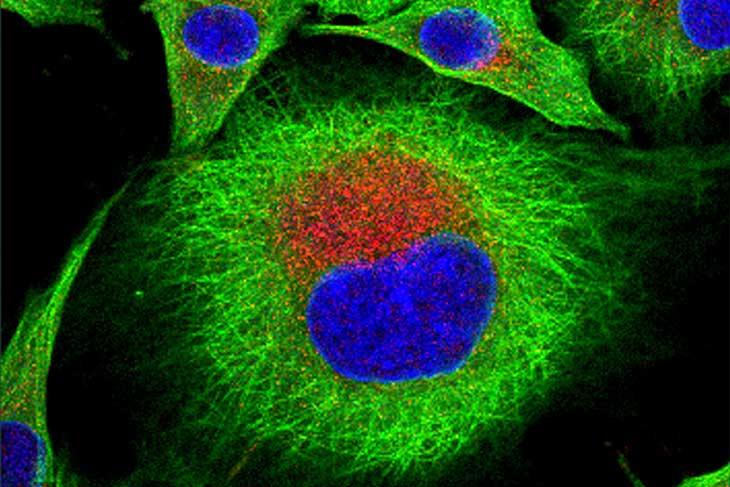Researchers at The Pirbright Institute have secured almost $1.5 million from the Bill and Melinda Gates Foundation to fund the development of improved foot-and-mouth disease (FMD) vaccines for East Africa.
The project, headed by Dr Bryan Charleston, Interim Director and CEO of the Institute will combine the expertise of Pirbright scientists Dr Julian Seago and Dr Eva Perez. Selection of new vaccine strains will incorporate the use of simple tests they have developed for assessing virus stability.
The effectiveness of FMD vaccine can be influenced by many different factors, such as the route of vaccination, the dose and the quality of antigens in the host (or molecules able to induce an immune response).
Current FMD vaccines are made from chemically-inactivated whole virus particles. FMD vaccines made using incomplete particles of virus do not elicit adequate levels of protective antibodies, and this problem is exacerbated by the fact that the protein shell of the FMD virus (or capsid) easily dissociates (breaks apart) in mild acidic conditions and at room temperature, into its constituent parts.
To assess the quality of these new vaccine candidates and the amount of antigen present, two different tests have been developed by Pirbright researchers. The first, called thermofluor, a qPCR-based (or real- time polymerase chain reaction) test, uses a slow increase in temperature to assess the stability of the virus, using a dye sensitive to the presence of nucleic acid (released in the presence of DNA or RNA when a virus disassociates).
The second ELISA-based test (a common laboratory test for detecting antibodies in the blood), uses llama antibodies derived from llamas immunized against FMDV. The selection of the specific antibodies used, called VHHs, were developed by Dutch scientists Michiel Harmsen and Aldo Dekker at Wageningen Bioveterinary Research (WBVR) in The Netherlands.
Dr Seago said: “In combination, these two techniques complement each other and have the potential to enable the quality control of FMDV vaccines, both during and after the production process, as well as helping to determine the most suitable storage conditions for the vaccine.
“Crucially both tests are user-friendly and can be quickly performed with minimal training using standard laboratory equipment. If our project is successful, it has the potential to significantly expedite the production and supply of vaccine and the approach has generated significant interest within the scientific community that studies FMDV”, he said.
The project will develop closer links with FMD vaccine companies in East Africa, with the intention of transferring the technology for future application; this will be mediated by The Pirbright Institute.
This research forms part of ongoing collaborative work between research teams at The Pirbright Institute and The Division of Structural Biology (STRUBI) University of Oxford, headed by Jenner Investigators, Dr Bryan Charleston and Professor David Stuart respectively.
A poster presentation of the project, produced by Dr Seago and Dr Perez, was awarded first prize in the poster competition at the recent EuFMD (The European Commission for the control of Foot-and-Mouth-disease) conference in Portugal.
